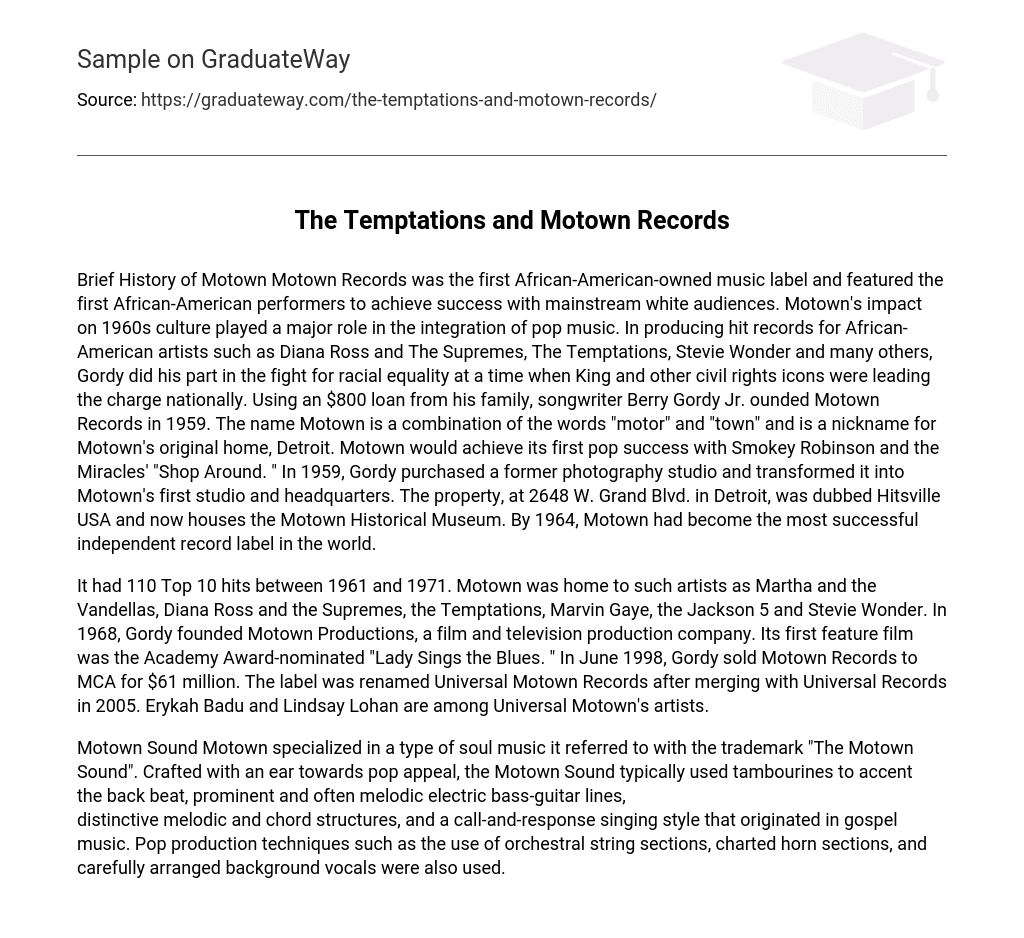Brief History of Motown Motown Records was the first African-American-owned music label and featured the first African-American performers to achieve success with mainstream white audiences. Motown’s impact on 1960s culture played a major role in the integration of pop music. In producing hit records for African-American artists such as Diana Ross and The Supremes, The Temptations, Stevie Wonder and many others, Gordy did his part in the fight for racial equality at a time when King and other civil rights icons were leading the charge nationally. Using an $800 loan from his family, songwriter Berry Gordy Jr. ounded Motown Records in 1959. The name Motown is a combination of the words “motor” and “town” and is a nickname for Motown’s original home, Detroit. Motown would achieve its first pop success with Smokey Robinson and the Miracles’ “Shop Around. ” In 1959, Gordy purchased a former photography studio and transformed it into Motown’s first studio and headquarters. The property, at 2648 W. Grand Blvd. in Detroit, was dubbed Hitsville USA and now houses the Motown Historical Museum. By 1964, Motown had become the most successful independent record label in the world.
It had 110 Top 10 hits between 1961 and 1971. Motown was home to such artists as Martha and the Vandellas, Diana Ross and the Supremes, the Temptations, Marvin Gaye, the Jackson 5 and Stevie Wonder. In 1968, Gordy founded Motown Productions, a film and television production company. Its first feature film was the Academy Award-nominated “Lady Sings the Blues. ” In June 1998, Gordy sold Motown Records to MCA for $61 million. The label was renamed Universal Motown Records after merging with Universal Records in 2005. Erykah Badu and Lindsay Lohan are among Universal Motown’s artists.
Motown Sound Motown specialized in a type of soul music it referred to with the trademark “The Motown Sound”. Crafted with an ear towards pop appeal, the Motown Sound typically used tambourines to accent the back beat, prominent and often melodic electric bass-guitar lines, distinctive melodic and chord structures, and a call-and-response singing style that originated in gospel music. Pop production techniques such as the use of orchestral string sections, charted horn sections, and carefully arranged background vocals were also used.





